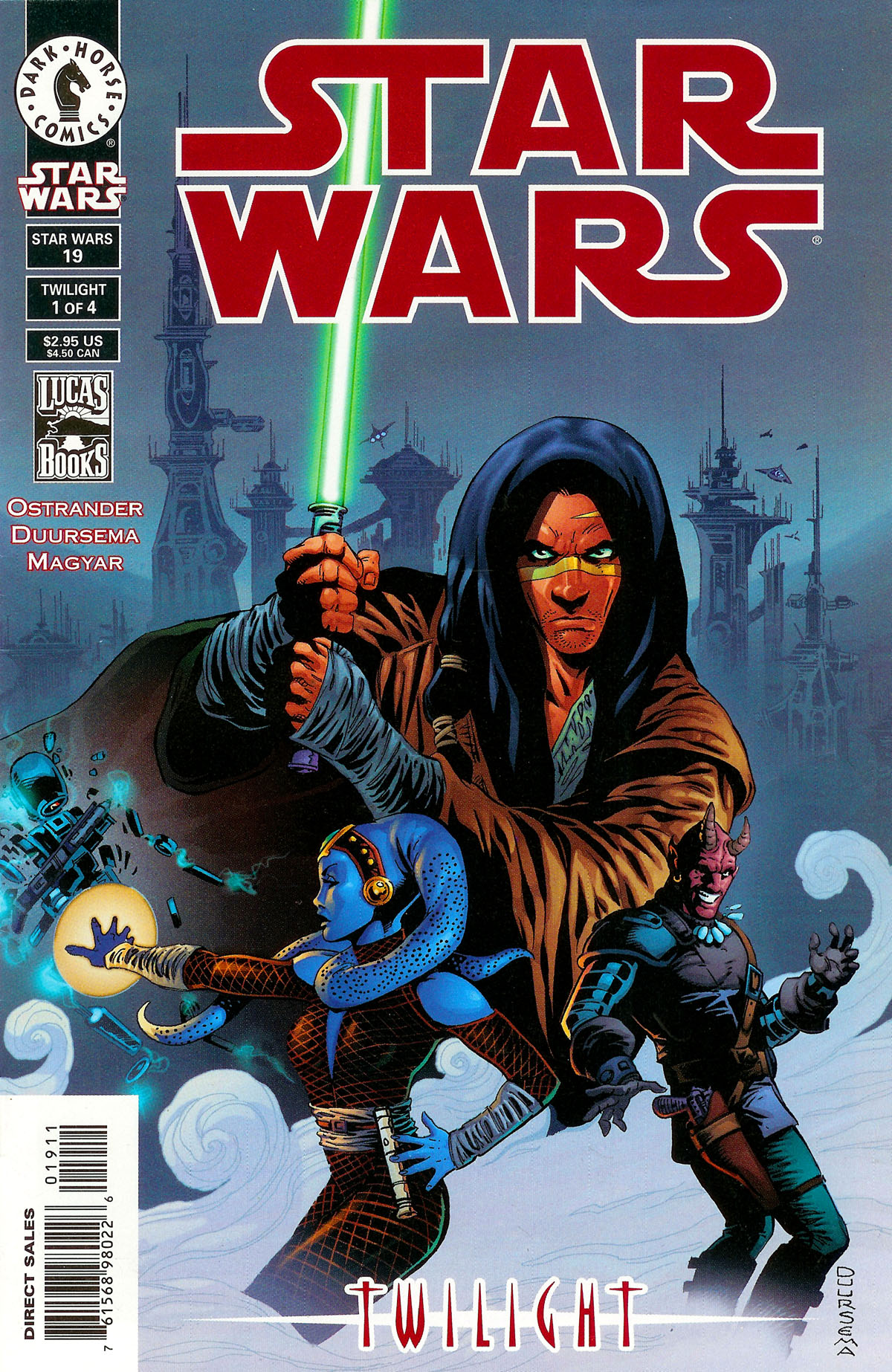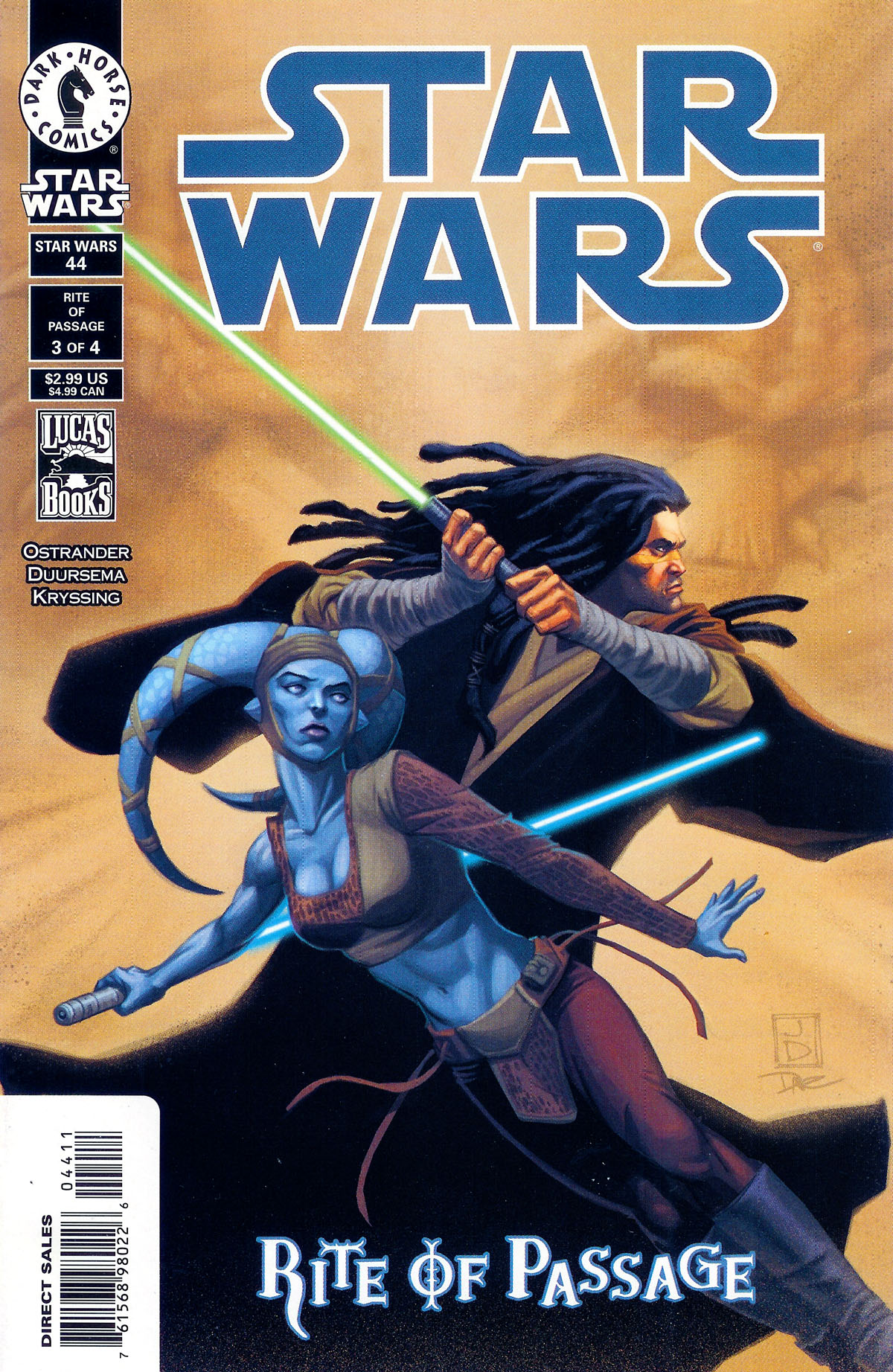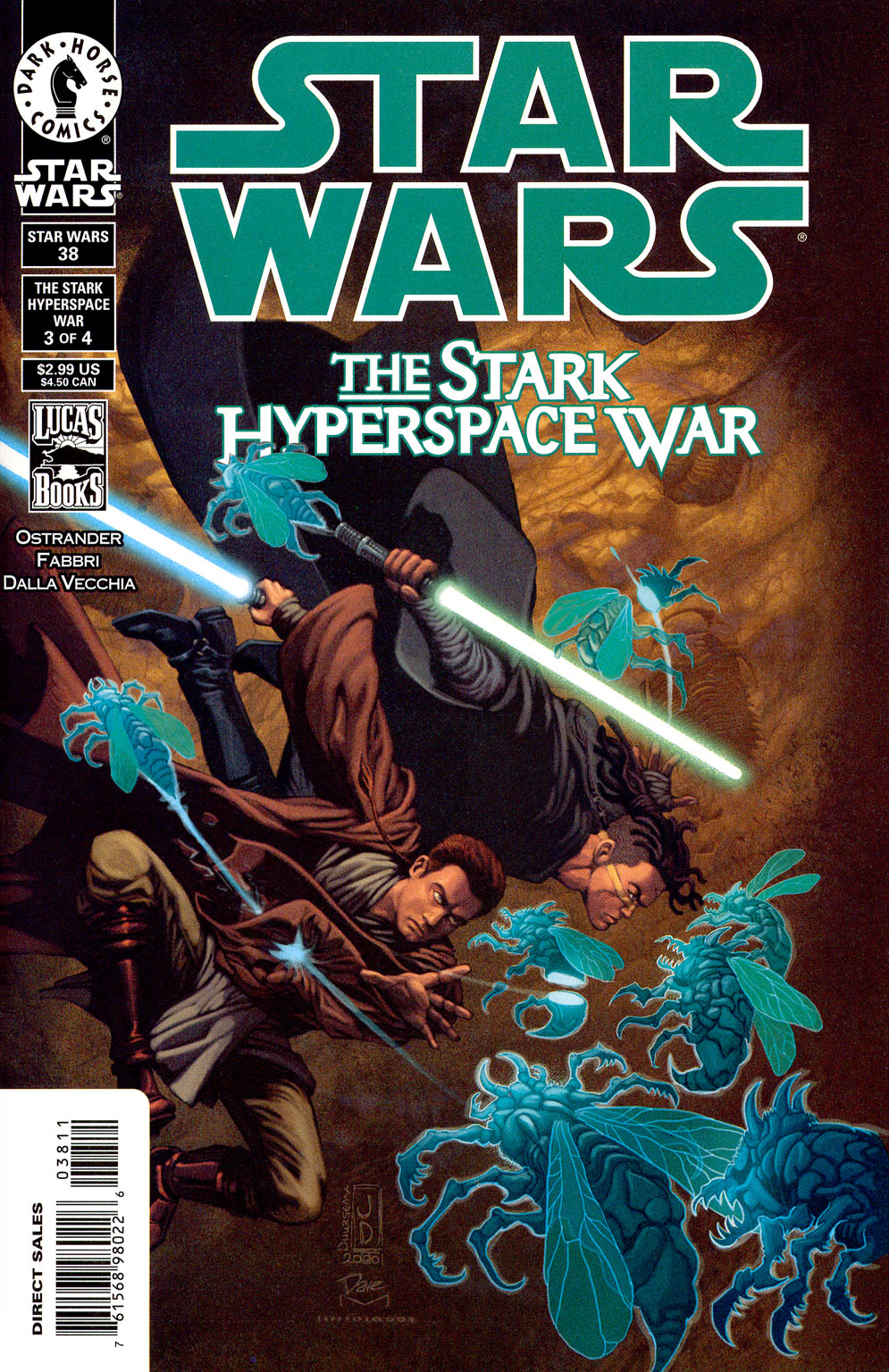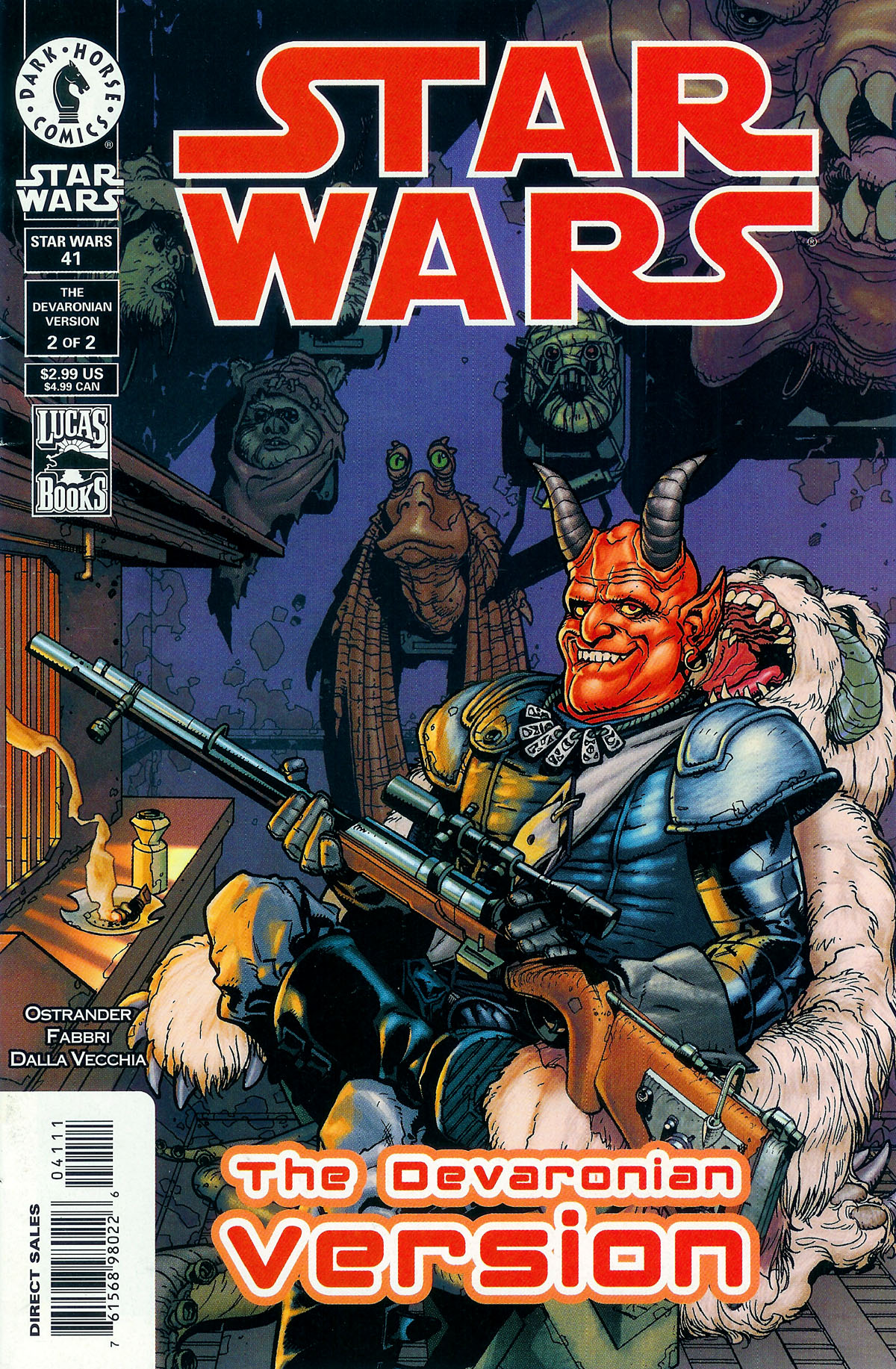With the 1999 release of The Phantom Menace, Star Wars fans were finally treated to what the Jedi originally looked like before their Order was destroyed. Prior to that, all we had seen were Obi-Wan Kenobi and Yoda after two decades of exile and whatever Luke Skywalker created in the years after Return of the Jedi. Episode I changed that, by showing us the Jedi Order, a group of righteous beings that fought for peace and justice in the name of the Galactic Republic and its Senate. They were wise and fair. They served the Light in all ways. We had not seen much of them yet, but we knew what a standard Jedi was all about.
But going against what is expected is often a great source of drama in a story. In that vein, a Jedi who does not strictly follow the light, but instead worked in the shadows. Not the righteous warrior-monk but the one who lived among the criminals whose efforts he was trying to undermine.
That Jedi in Darkness is Quinlan Vos, a Jedi who first appeared in the nineteenth issue of Star Wars: Republic (at that time just called "Star Wars"). A Kiffar from the planet Kiffu, Vos was not only strong with the Force, but also had his people's "psychometry" skill: he could get psychic readings off of objects he touched. Losing his memories and thrown to the wolves on the Smuggler's Moon of Nar Shaddaa, he finds he serves the Light best if he may touch the Dark.
 |
| Cover of Republic 19: Twilight, Part 1. Image from Wookieepedia. |
For this post, I consumed the following stories:
I read all 22 comics in the book Omnibus: Quinlan Vos: Jedi in Darkness. The Heart of Fire mini-comic, originally published across three issues of the book Dark Horse Extra, was in the book Omnibus: Menace Revealed.
Story:
Our story begins with an amnesiac Quinlan Vos waking up on the smuggler's moon of Nar Shaddaa, alongside Vilmarh "Villie" Grahrk, a Devaronian criminal who only looks out for himself, but is willing to help the Jedi to win wagers. Vos learns he is a Jedi who has lost his memory and his apprentice and goes on a quest to find both. He works on and off with Villie and several Jedi including his former master, an old man named Tholme. He is also pulled in different directions by the Jedi, his own people, and his moral code.
Vos usually works within the shadows and among criminals, such that many on the Jedi Council are concerned that he will fall to the Dark Side of the Force. But time and again he proves his resilience.
These stories also prominently feature Vos's former apprentice, a blue-skinned Twi'lek girl named Aayla Secura. Her family is embroiled in conflict as criminals vie for control of the spice trade on her home planet.
 |
| Quinlan Vos and Aayla Secura on the cover of Republic 44: Rite of Passage, Part 3. Image from Wookieepedia. |
Thoughts:
The pre-Clone Wars saga of Quinlan Vos was a great read. At the time of its publication, we had seen little of the Jedi Order, just one movie and a small number of novels and comics. They appeared to be peacemakers and protectors, defined by the righteousness of their cause. But we know from so many other stories, both in this era and not, that the galaxy is a messy place, full of shadows and darkness. The idea of a Jedi who works in that grey area, tempted by darkness but maintaining his self control, fascinates me. Not all problems can be solved by someone in a robe, preaching of peace and using the lightsaber as a last resort. Sometimes the galaxy's protectors must get dirty.
Quinlan Vos came across this accidentally, having had his memory erased a forced overdose of a new variant of the "spice" drug. Still, he found his place in the universe, stopped a coup on the Twi'lek homeworld, and saved the galaxy from the machinations of the Nightsisters of Dathomir.
One story that jumped out at me was The Stark Hyperspace War, issues 36 to 39. While not a story of a Jedi in the underworld, it's a flashback of Quinlan Vos's time as apprentice to Master Tholme. The action was set an additional 12 years before Episode I and also featured Qui-Gon Jinn and Obi-Wan Kenobi as they stopped someone from essentially taking over the Republic.
 |
| Young Quinlan Vos and Obi-Wan Kenobi on the cover of Republic 38: The Stark Hyperspace War, Part 3. Image from Wookieepedia. |
The coherence of Quinlan Vos's story is helped by the fact that it was largely led by one creative team. Aside from Infinity's End, Vos's saga is written by John Ostrander and pencilled by
Jan Duursema, not just between Episodes I and II but also during the Clone Wars. Having one team tell these stories keeps them coherent and helps them flow from one into the other.
I will say that the comic relief character of Vilmarh "Villie" Grahrk got annoying fast. Having a partner character who is from the underworld makes sense, and has been executed very well (see: Marn Hierogryph, Zayne Carrick's partner in the
Knights of the Old Republic comic series). But in this book, the underworld sidekick, with his odd way of speaking, got very tiring very fast. I do not wish to be annoyed by what I am reading.
 |
| The awful Villie on the cover of Republic 41: The Devaronian Version, Part 2. Image from Wookieepedia. |
Aayla Secura was an interesting enough character to be brought into Attack of the Clones and Revenge of the Sith, though given that she receives no characterization in either, I suspect this has more to do with her looks than anything written about her in these comics. As a Twi'lek girl, she is pretty and even as a Jedi wears something revealing, and thus stands out as a character on screen.
These stories form something of the basis for Quinlan Vos's eventual introduction into New Canon. He is featured in one episode of
The Clone Wars as well as the novel
Dark Disciple, where he explores his own darkness in the underworld and gets close to Asajj Ventress, former assassin to Count Dooku and Nightsister turned bounty hunter. The themes of identity and memory loss are dropped but the idea that Quinlan Vos is the Jedi in Darkness remained.
Next:
My next Legends post (Part 15) will feature additional standalone stories set between Episode I and II (the remaining ones that are not direct prologues to Episode II, but which fit no obvious theme).




Comments
Post a Comment